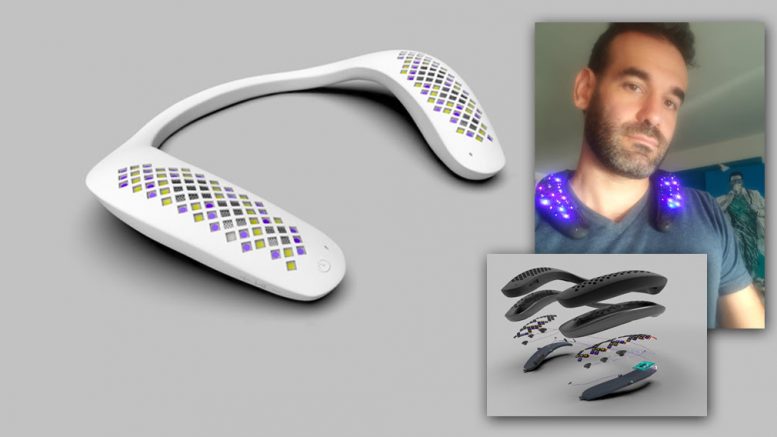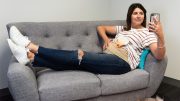An international team of engineers and scientists from MIT, Harvard, Apple, Teman, and top hardware companies have launched UVCWear, a company making Far-UVC wearable technology that is safe for skin and eyes and deadly to viruses and bacteria.
Launching the device on Indiegogo UVCwear reached its crowdfunding goal on the first day.
As companies and governments around the world scramble to find ways to enable people to return to work while keeping workers and customers safe, the UVCWear solution adds capability to filter the air around the wearer, killing viruses and bacteria before they come into contact with users’ skin or eyes. The UVC wearable device has been designed incorporating the latest scientific research from Harvard Medical School, Columbia University, Duke, the NIH, and other research centers, showing that UVC light in the 207 to 220nm range is safe for skin and eyes because it cannot penetrate deep into living human cells.
Until now, UVC light purification systems were expensive, bulky, fragile, and energy inefficient. UVCWear’s founder, Ari Teman, designed and patented (pending) energy-efficient, impact-resistant, waterproof devices with “Far UVC” which can be worn around a person’s shoulders or wrists to kill viruses and bacteria in nearby air and surfaces.
MIT Professor Juhan Sonin, with decades of healthcare design experience, has joined UVCWear as Chief Design Officer. Juhan will also oversee enterprise activation and education.
Engineer’s from Teman’s GateGuard and Friend or Fraud teams will move over to UVCWear to manage operations and hardware production. Friend or Fraud was named one of the top-6 cybersecurity startups at DLD in Tel Aviv by Visa Europe and developed the artificial intelligence, hardware, and platform behind the GateGuard systems, used by thousands across North America every day. Engineers on the team will work in the USA, Ukraine, and Israel.
Safe for Skin & Eyes
Studies by Columbia University and Duke have shown that not only does Far UVC (UVC in the range of 207-220nm) kill COVID19 and other superbugs, but that it is also safe for eyes and skin. Unlike UVC in the 270nm range and beyond, Far UVC does not penetrate cells as deeply and does not cause damage like traditional UVC.
An Innovation in PPE
PPE “hasn’t changed in decades”, said Dr. Bhadelia Nahid MD MA, an infectious diseases physician and the medical director of the Special Pathogens Unit at Boston University School of Medicine, in HarvardX’s course on Ebola. The UVCWear team aims to change that.
Unlike a mask which traps in CO2, the wearable UVCWear Collar works by surrounding the wearer with UVC light, leaving the mouth and nose unobstructed. Masks are also create environmental harm, requiring disposal or washing after a short period of use. The UVCWear Collar is built to last for years.. The UVCWear collar is covered in a layer of washable, comfortable, and waterproof silicone, which the wearer can wipe clean or rinse.
“PPE is a multi-billion dollar expense, with a multi-trillion dollar impact on society, as we’re seeing with Covid,” said Teman, “Masks are uncomfortable, destroy the environment, cause people to faint from CO2 as they drive, and block peoples’ ability to read facial expressions or even identify friends, making it impossible for folks who are hard-of-hearing to read lips, too. So we wanted to make something that was long-lasting, comfortable, enjoyable, and practical so people will actually wear PPE and benefit. While the first version of UVCWear is a consumer product, not a medical device to intended to cure or prevent disease, we are excited about the potential for Far UVC to be a part of that solution, and we intend to continue innovating PPE.”
The UVCWear team is currently in talks with major investors looking to expand the reach and develop other Far UVC-based products.





